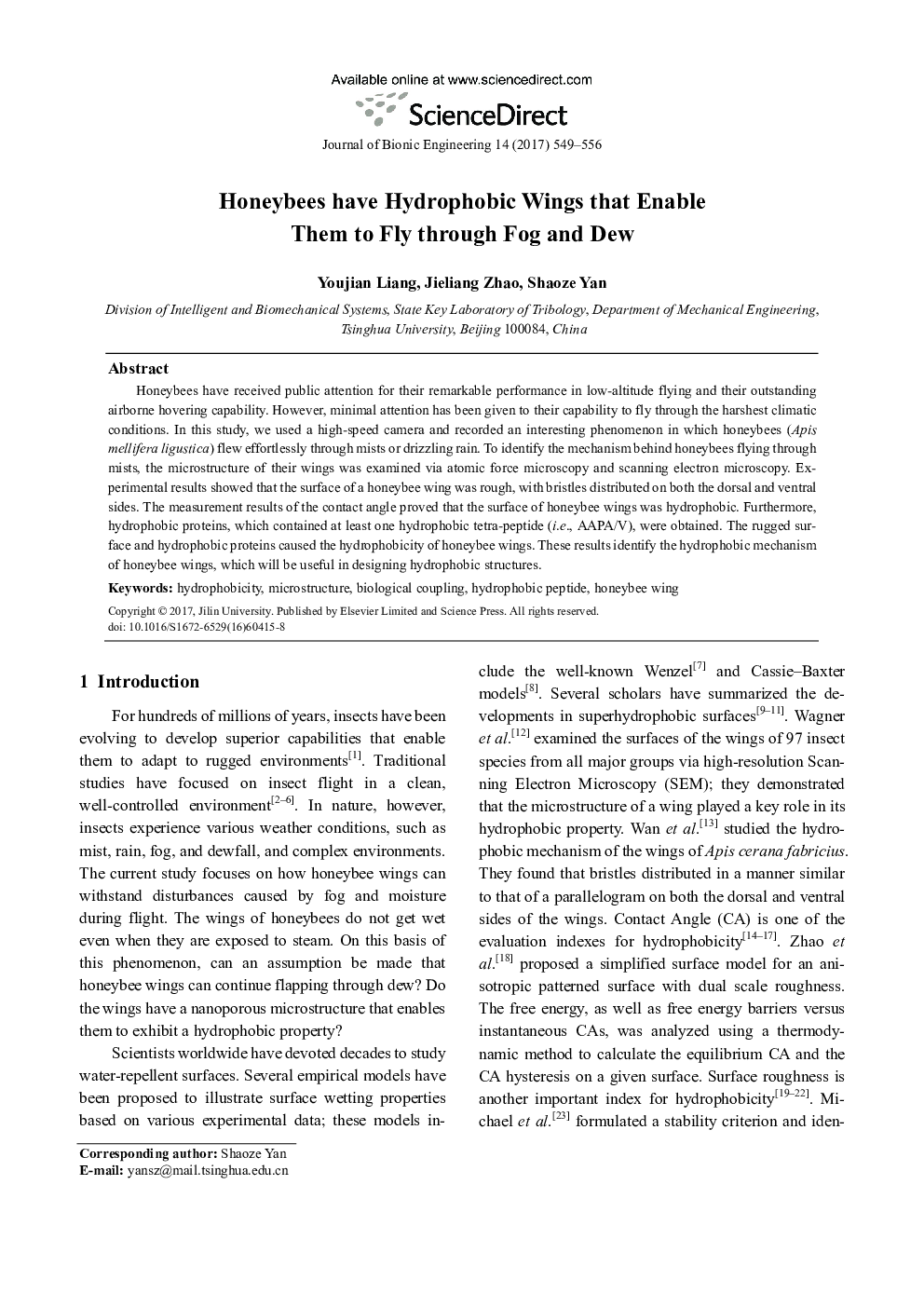| Article ID | Journal | Published Year | Pages | File Type |
|---|---|---|---|---|
| 7216475 | Journal of Bionic Engineering | 2017 | 8 Pages |
Abstract
Honeybees have received public attention for their remarkable performance in low-altitude flying and their outstanding airborne hovering capability. However, minimal attention has been given to their capability to fly through the harshest climatic conditions. In this study, we used a high-speed camera and recorded an interesting phenomenon in which honeybees (Apis mellifera ligustica) flew effortlessly through mists or drizzling rain. To identify the mechanism behind honeybees flying through mists, the microstructure of their wings was examined via atomic force microscopy and scanning electron microscopy. Experimental results showed that the surface of a honeybee wing was rough, with bristles distributed on both the dorsal and ventral sides. The measurement results of the contact angle proved that the surface of honeybee wings was hydrophobic. Furthermore, hydrophobic proteins, which contained at least one hydrophobic tetra-peptide (i.e., AAPA/V), were obtained. The rugged surface and hydrophobic proteins caused the hydrophobicity of honeybee wings. These results identify the hydrophobic mechanism of honeybee wings, which will be useful in designing hydrophobic structures.
Related Topics
Physical Sciences and Engineering
Engineering
Biomedical Engineering
Authors
Youjian Liang, Jieliang Zhao, Shaoze Yan,
